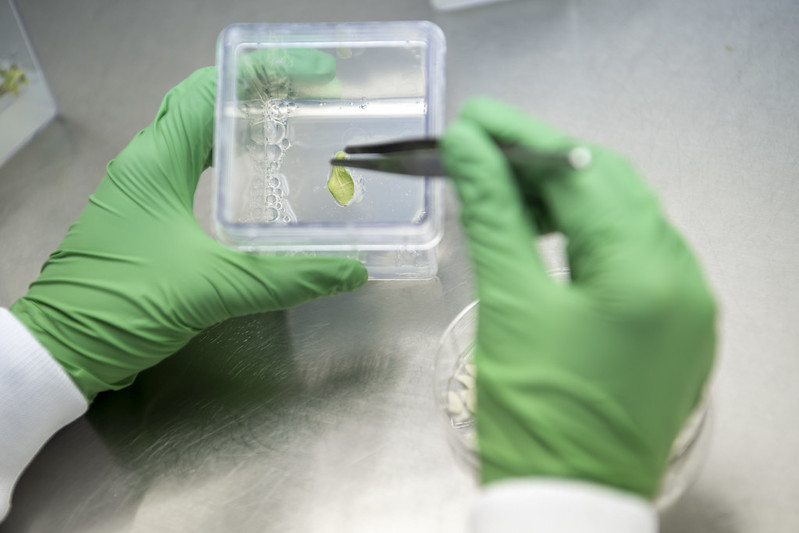Genome sequencing: Get involved through the College of ACES

“If you could sequence any genome, what would it be?” This was the question posed to ACES 399 students last Wednesday at our weekly seminar. Dr. Tony Studer, assistant professor in the Department of Crop Sciences, was giving a talk on the defining challenges facing the department.
Dr. Studer emphasized several major issues facing agriculture, such as adjusting key crops to climate changes, increasing the efficiency of photosynthesis, and how to properly analyze deluges of data. The latter was of especial interest to Dr. Studer, as his background is in genetics.
A little over a decade ago, genetic data like sequencing a genome could cost multiple millions of dollars. Dr. Studer recalled one of his professors at that time predicting that, eventually, genome sequencing would be commonplace for all research laboratories. “[The class] all laughed, of course, because at the time that was ridiculous,” Dr. Studer said.
As history shows, however, that prediction proved true. Today, researchers like Dr. Studer can sequence fragments or entire genomes of their experimental subjects, condensing the complexity of living organisms into a neat computer file filled with A, T, C, and G. The problem is no longer getting the data, now we just need to decide what to do with it. Removing that long-standing limiting factor has provided a huge opportunity for growth in crops research, as well as animal sciences and other scientific fields.
This leads us back to that original question–what genome would you sequence? What avenue would you choose to pursue, now that sequencing, genome databases, and similar technologies have so greatly improved our abilities to delve into DNA? At the University of Illinois, there’s already plenty of people taking advantage of this new information boom.
Dr. Studer provided examples of current research projects in Crop Sciences, such as using functional genetics to discover an entirely novel nitrogen trait; exploring multiple disease-resistance patterns; or determining transpiration rates in relation to circadian cycles. Do you see yourself joining this group in the battle to better understand and utilize the plant species that feed us every day?
If so, you’ll be pleased to hear that opportunity is knocking. The University of Illinois has three pillars of purpose: research, education, and extension. One of the consequences of this campus culture is faculty’s eagerness to not only share their research, but also involve others, especially students, in the process. “I like to do something with each of these concepts every day,” said Dr. Studer, “If I can do that, I consider it a good day.”
If you have genuine interest in cutting edge research in the sciences that feed and clothe millions every day, there is no better place to cultivate that curiosity than at the College of ACES. There are many grand challenges facing agriculture in the coming years, but together we can start solving them today.
Students in ACES 399: “Vision 2050 –Grand Challenges of the Millenium” attend presentations by ACES faculty members about current topics in agriculture. As part of their class assignments, students are asked to write blog posts reflecting on those topics. The Voices of ACES blog will feature select ACES 399 blog posts throughout the semester.